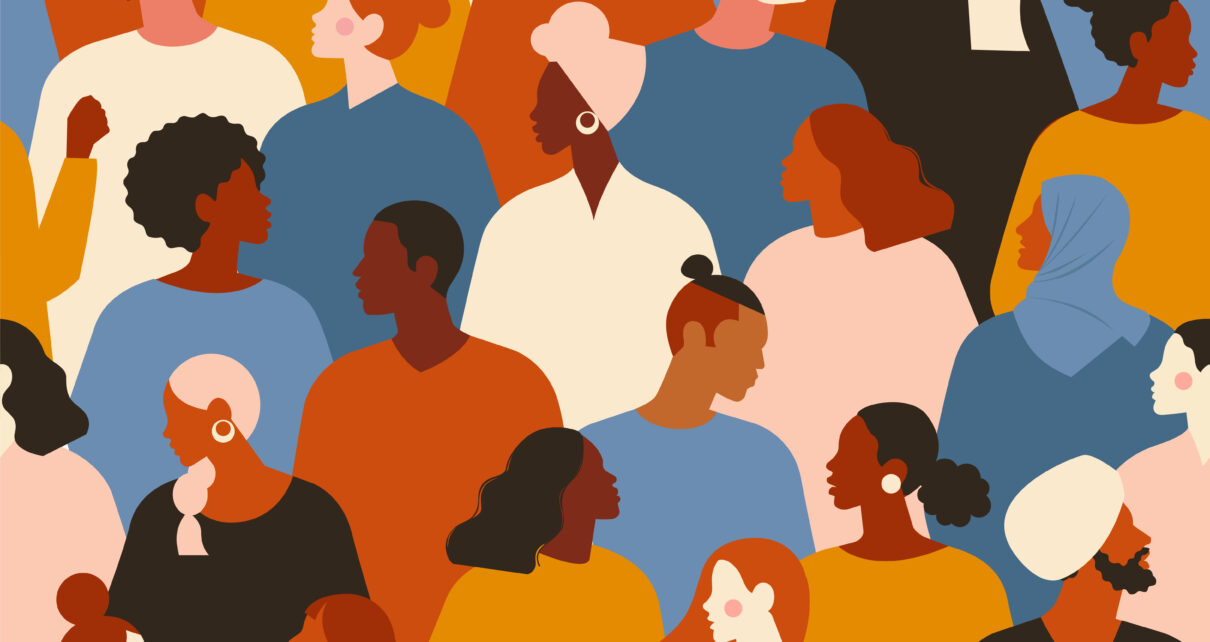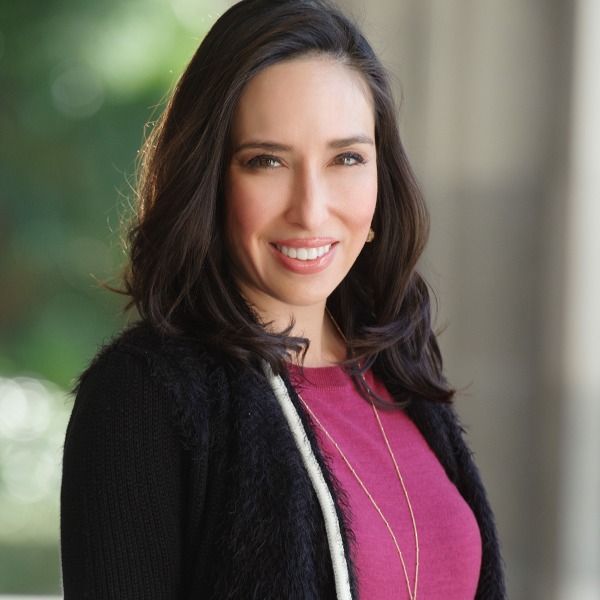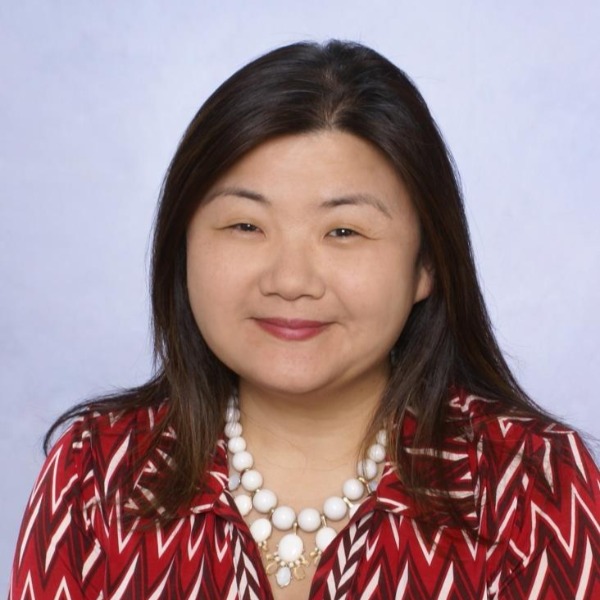“Back to Our Future” was an appropriate theme for LeadingAge California’s 2021 Annual Conference as we celebrated our 60th anniversary this year. For this issue of Engage, we chose to highlight the stories of three female leaders from diverse backgrounds in our field who spoke at this year’s Panel of Pundits session, as they address and reflect on how their individual life experiences have changed their perspectives and influenced them in their leadership roles.
Christina Cerrato, Director of Operations for Affordable Housing, Episcopal Communities & Services
I was fortunate to find mentors and minority networks along the way who could relate to my experiences and guide me. Because even in diverse companies and groups, minorities may still feel excluded. In our affordable housing and Life Plan communities, often the front-line staff may be very diverse. But the administrators, the executive directors, the supervisors, the leadership team may not be so diverse. And although you might have peer support, it can be challenging to feel you have a voice beyond that. As mentors, especially mentors of color, we need to support employees of color in helping them meet their professional goals, providing them opportunities, access and resources for their education, connections, networking, experiences, and professional coaching.
When having conversations on branding, we know that visuals matter in our publications and the website, because our consumers and those who we serve – including employees – are becoming more diverse. The photo choices and language we use can help us stand out and reach new demographics. There really is power in seeing someone like yourself in an image versus stock images where everyone looks the same. This may cause prospects and applicants who don’t relate to those photos feel that the community organization is just not for them. We need to be aware of our language on our website and social media posts as words carry so much weight and power and show that our organization is welcoming and inclusive by representing the community internally and externally in each of the photos and words we choose to use.
These conversations on race and diversity aren’t easy – they’re uncomfortable. But we need to be comfortable with having them. We need to be proactive and intentional about the conversation and create a safe place for our employees and members to share. We need to authentically seek each other’s differences and find joy in learning about these differences so that we can make better decisions for employees and residents to feel more included, empowered, and creative.
At the core of it, human beings just want to belong. Diversity and inclusion is not about programs, compliance, policies, or goals and initiatives that need to be met. It’s about the human beings behind it. It is about bringing humanity into the conversation, and into our hearts.
Kendra Roberts, Vice President of Operations, HumanGood
And so, as time went on, mentors and colleagues started exposing me to LeadingAge in different ways. I had the opportunity to participate in the EMERGE program, and saw leaders that looked different, that were women, Latina, and African American. And so, you start to think, ‘Okay, I have a leg in this race. I can do this work.’ And then I started to develop in my leadership journey.
Any time I hire a person that mindset is always at the forefront – what do they see? What is their perception of our organization? Christina talked about the importance representation on your website and materials. When people are looking for jobs, they’re going to Google you. They’re looking at your Board of Directors, your leadership staff, and who is running your organization. And if there is not at least one person on your team with who they can identify, they’re going to say this is not the place for me. If you aspire to be a leader, it’s even harder.
After the murder of George Floyd, our organization started having those hard conversations and decided to take a hard look at inclusion, diversity, and equity in our organization. I’m honored to serve as co-Chair of our Inclusion Council.
As far as recommendations that I have for LeadingAge and its leaders – does your leadership team reflect the community that you serve? I think that’s the important question you need to ask yourself. Does everybody on your leadership team look the same? Are they all men? All white? Start having those hard conversations and deciding you’re going to intentionally make change. Are you creating opportunities and paths for other people who don’t look like you? If I don’t have a master’s degree but I’ve been working in this industry for 20 years, can I become a leader in your organization?
Those are the hard questions that we must start asking ourselves if we really want to have the inclusive society that we say we want.
Ginna Baik, Senior Business Development Manager, Alexa Smart Properties
Most Silicon Valley technologists are thinking about 45 years old and younger. When you start to think about that you can understand why maybe font sizes are so small, or why some have a hard time with the touch experience. The pandemic has opened a lot of people’s eyes regarding how to use technology, not only to bridge the Digital Divide but also to care for everyone.
We’re trying to be much more deliberate and conscious about developing technology that every single person can use. It’s really about understanding the concept of Universal Design, and for this I like to bring up the concept of sliding doors. Sliding doors don’t discriminate based on any disability a person may have or how young or old they are. Someone in a wheelchair or walker or walks with a cane, they don’t need assistance to go through a sliding door.
That’s what technology really needs to focus on. How do we design for all people? There’s an opportunity to recognize that you yourself may unintentionally have some sort of bias, and to try to make a change for the better so that we all live harmoniously and in peace.


 When I first started my career and was asked to sit on committees and boards, I felt like I checked a lot of boxes. Woman, Latina, a Millennial, or all of them. There were times when I felt I was a token and I questioned whether I was really qualified to have a seat at the table. I felt I had to present myself in a certain way to fit in and show my skill set. And there were times when it did feel intimidating to speak up, especially when I was in a room full of much older white men. But I was willing to take on these opportunities wherever I was selected and push through the internal and external barriers so that one – I may learn and grow. And two – to open doors for others.
When I first started my career and was asked to sit on committees and boards, I felt like I checked a lot of boxes. Woman, Latina, a Millennial, or all of them. There were times when I felt I was a token and I questioned whether I was really qualified to have a seat at the table. I felt I had to present myself in a certain way to fit in and show my skill set. And there were times when it did feel intimidating to speak up, especially when I was in a room full of much older white men. But I was willing to take on these opportunities wherever I was selected and push through the internal and external barriers so that one – I may learn and grow. And two – to open doors for others. I remember when I was in my early 20s and my first job was at an affordable housing community. At that time, I worked for an organization that allowed all of the team members to attend the LeadingAge conference, so it was my first time going to a national event. I remember walking into the convention center and thinking, ‘Oh my God, everybody in here is old and white.’ And I immediately thought to myself, ‘Maybe this is not the field for me.’ Fast forward, going to a LeadingAge California conference, I had the same perception. Everyone teaching the courses and everyone who attended the conference had that same demographic. After a while you started to feel as though to be a leader in this field, you need to be white and wear gray, black or navy suits. It doesn’t matter if you have a bachelor’s or master’s degree, that’s what you have to look like.
I remember when I was in my early 20s and my first job was at an affordable housing community. At that time, I worked for an organization that allowed all of the team members to attend the LeadingAge conference, so it was my first time going to a national event. I remember walking into the convention center and thinking, ‘Oh my God, everybody in here is old and white.’ And I immediately thought to myself, ‘Maybe this is not the field for me.’ Fast forward, going to a LeadingAge California conference, I had the same perception. Everyone teaching the courses and everyone who attended the conference had that same demographic. After a while you started to feel as though to be a leader in this field, you need to be white and wear gray, black or navy suits. It doesn’t matter if you have a bachelor’s or master’s degree, that’s what you have to look like.  The first step to diversity, I believe, is really acknowledging that all of us have what’s called “unconscious bias.” Being a second-generation Korean American, I grew up in the Midwest, where I was the only Asian in my school. In that experience, I learned early on how it feels to be different – I also learned how to be comfortable being different. Bias is natural in the way that technology is built. If you think about Silicon Valley and all the companies who build Smartphones and wearables – you have to wonder, are they considering all people, or just thinking about it from their perspective?
The first step to diversity, I believe, is really acknowledging that all of us have what’s called “unconscious bias.” Being a second-generation Korean American, I grew up in the Midwest, where I was the only Asian in my school. In that experience, I learned early on how it feels to be different – I also learned how to be comfortable being different. Bias is natural in the way that technology is built. If you think about Silicon Valley and all the companies who build Smartphones and wearables – you have to wonder, are they considering all people, or just thinking about it from their perspective?

